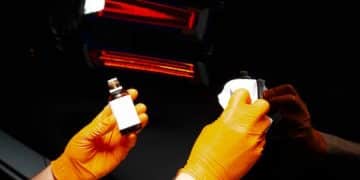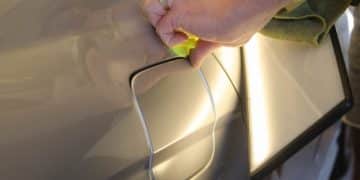The Complete Guide to Car Detailing Tools: Essentials & What to Skip
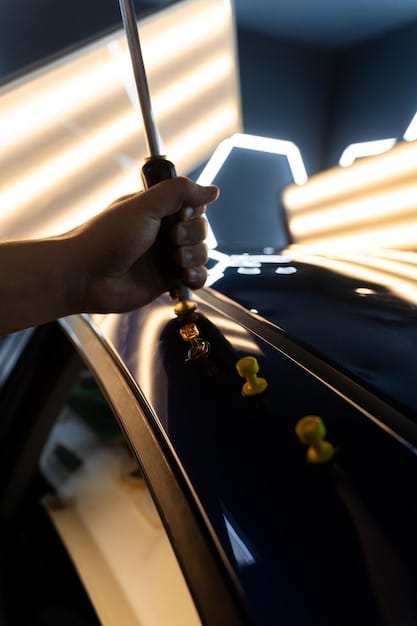
The Complete Guide to Car Detailing Tools: What You Need and What You Can Skip offers insights into essential car detailing tools, helping enthusiasts and professionals make informed decisions on purchases. This guide focuses on differentiating between necessary equipment and those that are not essential, saving time and money.
Want to keep your car looking its best? Car detailing can seem daunting, but with the right tools, it becomes much easier. This guide helps you navigate the world of car detailing equipment.
We’ll cover The Complete Guide to Car Detailing Tools: What You Need and What You Can Skip, ensuring you invest in the tools that truly make a difference. Let’s get started and make your car shine!
Understanding the Essentials of Car Detailing Tools
Car detailing involves cleaning, correcting, and protecting your vehicle’s surfaces. Having the right tools is key to achieving professional results. Let’s break down the must-have tools for any detailing enthusiast.
Basic Cleaning Tools
These tools are fundamental for washing and preparing your car for further detailing.
- Wash Mitts: Soft microfiber mitts prevent scratches during washing.
- Two-Bucket System: Keeps wash water clean by separating rinse and soap buckets.
- Microfiber Towels: Essential for drying and wiping surfaces without leaving streaks or lint.
Proper washing can make a huge difference in how well your car looks. Investing in quality wash mitts and microfiber towels is always a wise choice.
Paint Correction Tools
Addressing paint imperfections can dramatically improve your car’s appearance.
- Polisher: A dual-action polisher is safer for beginners and effective at removing swirls and light scratches.
- Polishing Pads: Different pads (cutting, polishing, finishing) are used with various compounds to correct and refine the paint.
- Compound and Polish: These abrasive liquids remove imperfections and restore shine.
Paint correction requires a bit of practice, but the results are worth the effort. Take your time and follow the instructions carefully.
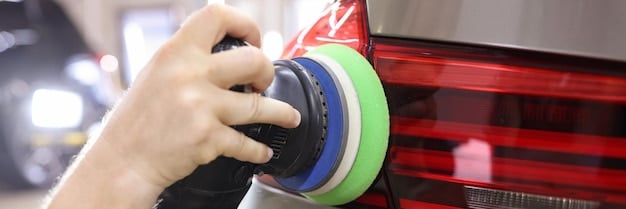
Protection and Finishing Tools
These tools help protect your car’s paint and add that final touch of shine.
- Wax or Sealant Applicator: Foam pads or applicators ensure even application of wax or sealant.
- Wax Removal Towels: Clean microfiber towels used to buff off wax or sealant.
- Detailing Brushes: Various sizes for cleaning hard-to-reach areas and applying dressings.
Protecting your car’s paint is crucial for maintaining its appearance over time. Regular waxing or sealing can keep it looking new.
Having these essential tools will set you up for a successful car detailing session. Knowing what each tool does ensures you use them effectively.
The Complete Guide to Car Detailing Tools: What You Need and What You Can Skip
Choosing the right tools for car detailing can be overwhelming. Knowing what’s essential versus what’s optional can save you money and time. Let’s focus on the core tools every detailer should have.
Essential Tools for Every Detailer
These tools are fundamental and should be part of every detailing toolkit.
A good pressure washer can significantly speed up the initial washing process. Quality microfiber towels and wash mitts are indispensable for preventing scratches. A dual-action polisher, while an investment, provides noticeable results in paint correction.
Tools You Can Skip (At Least Initially)
Some tools are nice to have but not essential, especially for beginners.
Foam cannons are fun but not necessary if you have a good wash mitt and soap. Clay bars are useful but can be replaced by chemical decontamination products. Expensive steam cleaners are often overkill for basic detailing.
Making Smart Choices
Consider your budget, detailing goals, and frequency of use when deciding which tools to buy.
Start with the essentials and gradually add more specialized tools as you gain experience. Reading reviews and seeking advice from experienced detailers can also help you make informed decisions.
Understanding The Complete Guide to Car Detailing Tools: What You Need and What You Can Skip ensures you invest wisely and avoid unnecessary expenses.
Choosing the Right Polisher for Your Needs
Selecting the right polisher is crucial for effective and safe paint correction. Different types of polishers cater to various skill levels and detailing needs. Let’s explore the options.
Dual-Action (DA) Polishers
These are the most popular and safest polishers for beginners.
DA polishers have a random orbital motion, reducing the risk of burning the paint. They are versatile and effective for removing swirls, light scratches, and oxidation. They are ideal for those new to paint correction.
Rotary Polishers
Rotary polishers have a direct, circular motion and are more aggressive.
These are best suited for experienced detailers who need to remove severe paint imperfections. They require skill to avoid damaging the paint. They can remove defects quickly but also require a higher level of precision.
Choosing the Right Pad
The polishing pad you choose is just as important as the polisher itself.
Cutting pads are used with compounds to remove scratches and imperfections. Polishing pads refine the paint after cutting. Finishing pads are used with polishes to add gloss and enhance the finish.
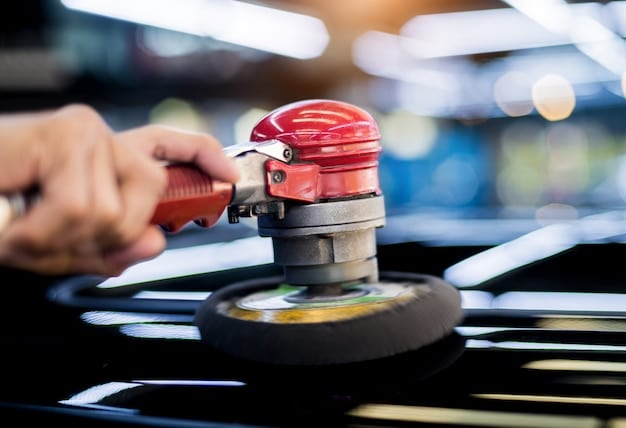
Selecting the right polisher and pads depends on your skill level and the condition of your car’s paint. Starting with a DA polisher is generally recommended for beginners.
Essential Chemicals and Compounds for Car Detailing
Chemicals and compounds play a vital role in car detailing. Using the right products ensures effective cleaning, correction, and protection. Let’s look at the essentials.
Washing Soaps
Car wash soaps are specially formulated to clean without stripping wax or sealant.
Choose a pH-balanced soap to protect your car’s finish. Some soaps are designed for specific purposes, such as removing bugs or road grime. Using the right soap ensures a thorough and safe wash.
Compounds and Polishes
These abrasive products remove paint imperfections and restore shine.
- Cutting Compound: Used to remove scratches, swirls, and oxidation.
- Polishing Compound: Refines the paint after cutting and enhances gloss.
- Finishing Polish: Adds the final touch of shine and depth.
Using the right compound and polish combination is essential for achieving optimal results. Always test in an inconspicuous area first.
Waxes and Sealants
Waxes and sealants protect your car’s paint and add a layer of shine.
- Carnauba Wax: Offers a deep, warm shine but requires regular reapplication.
- Synthetic Sealant: Provides longer-lasting protection and durability.
- Ceramic Coating: Offers the most durable protection, lasting several years.
Choosing the right wax or sealant depends on your desired level of protection and maintenance effort.
Selecting the correct chemicals and compounds is crucial for achieving professional-quality results in your car detailing endeavors.
Maintaining Your Car Detailing Tools
Properly maintaining your car detailing tools extends their lifespan and ensures they perform optimally. Regular cleaning and care will protect your investment. Let’s look at some tips.
Cleaning Microfiber Towels
Microfiber towels should be washed separately from other laundry.
Use a microfiber-specific detergent and avoid fabric softeners, which can reduce their absorbency. Air drying is recommended to prevent damage from high heat. Clean towels are essential for scratch-free detailing.
Caring for Polishing Pads
Polishing pads should be cleaned after each use.
Use a pad cleaning brush or compressed air to remove residue. For heavily soiled pads, soak them in a pad cleaning solution. Clean pads ensure consistent polishing results.
Storing Tools Properly
Store your tools in a clean, dry place.
Protect them from extreme temperatures and humidity. Keep chemicals in a cool, dark area to prevent degradation. Proper storage keeps your tools in top condition.
Maintaining your car detailing tools is essential for their longevity and performance. Regular care ensures your tools are always ready for the next detailing session.
| Key Point | Brief Description |
|---|---|
| ✔️ Essential Tools | Microfiber towels, wash mitts, and a two-bucket system are fundamental for cleaning. |
| ✨ Paint Correction | A dual-action polisher and various polishing pads help remove imperfections and restore shine. |
| 🛡️ Protection | Waxes and sealants protect the paint and enhance its appearance. |
| 💰 Tools to Skip | Foam cannons and steam cleaners can be skipped initially to save money. |
Frequently Asked Questions
For beginners, essential tools include microfiber towels, wash mitts, a two-bucket system, and pH-balanced car wash soap. These tools provide a safe and effective start to car detailing.
Washing your car every two weeks is generally recommended to remove dirt and contaminants. More frequent washing may be necessary in harsh weather conditions or if you drive often.
Regularly cleaning and storing your detailing tools properly is essential. Wash microfiber towels separately, clean polishing pads after each use, and store chemicals in a cool, dark place to maintain their effectiveness.
No, household cleaners are often too harsh and can damage your car’s paint and interior surfaces. Always use products specifically formulated for car detailing to ensure safe and effective cleaning.
Ceramic coatings offer long-lasting protection against scratches, UV rays, and chemical contaminants. They also provide a hydrophobic surface, making it easier to wash and maintain your car’s appearance over several years.
Conclusion
Understanding The Complete Guide to Car Detailing Tools: What You Need and What You Can Skip will help you make informed decisions and achieve professional-quality results in your car detailing efforts. By focusing on essential tools, choosing the right chemicals, and maintaining your equipment properly, you can keep your car looking its best for years to come.
Remember to start with the basics and gradually expand your toolkit as you gain experience. With the right knowledge and tools, anyone can achieve a showroom-worthy finish on their vehicle.

